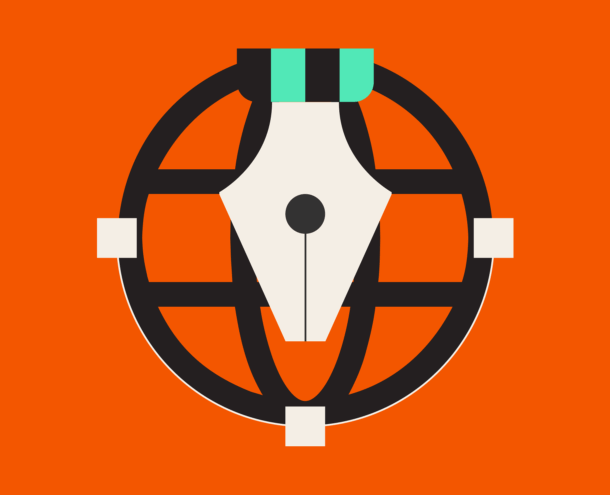The science and art of naming

Everyone has an opinion on a name. It’s one of those topics where personal taste feels like professional expertise. But naming your company deserves more rigor than a gut feeling.
Proper naming requires work from both the left and right sides of the brain. There is no singular formulaic approach that pops out perfect names every time. If there was, trust us, we’d use it. And while AI can help us with the brainstorming process, it is not up to the task of making nuanced judgments about market fit, cultural resonance, and long-term brand implications.
Conversely, if naming were all art and no science, each name would sound beautiful but lack the substance to lead the brand to greatness. For consumers (ahem, people), we must create names that both connect emotionally and deliver commercially.
Naming is hard. Face it—anyone who has named a child, a pet, or even a company knows it’s a challenge that includes emotions, past conceptions and misconceptions, ideology, practicality, and more. Add to this the pressure of legal clearance, trademark availability, domain names, and global considerations—and suddenly what should be a creative exercise becomes a complex optimization problem with dozens of competing variables.
No wonder so many naming projects get stuck in endless rounds of feedback or settle for safe, forgettable options that check all the boxes but move no one. This is precisely why successful naming demands both analytical muscle (science) and creative intuition (art). Let’s start with the science.
The science of names
The science of naming requires a systematic approach that doesn’t rely on guesswork or inspiration alone. A structured methodology ensures we don’t waste precious time and energy debating about process. Instead, we can focus on the variables that matter most for each specific challenge.
Each step in a thorough naming process improves the result in some way, ensuring we’re not just leaning on a stroke of genius. The process must also consider how the name fits within the broader brand architecture—whether it’s the hero brand for a new business unit or a supporting product name that needs to work within an existing naming system. With clear criteria and parameters established, we build a hypothesis and some scaffolding for the type of name they are looking for. Then the naming begins: thousands of names, generated and iterated.
AI is part of this science too. Using large language models, we get through some of the expected names quickly and push into unexpected territories without fear of wasting time. This allows us to go deeper and develop more strategic, harder working names.
Quality names are unlikely without quantity. Here at Monigle, we create those thousands of name ideas to get past surface level ideas and force our brains to go beyond the expected. And after, we throw away most of them. Sure, there are times when we get lucky and the right name comes up quickly, but most of the time, it’s about creating many to find the few that will stick.
To maximize our exploration, we draw from multiple linguistic disciplines. Taxonomy helps us classify names within different systems, understanding how they relate to industry conventions and competitive landscapes. We dive into etymology to uncover historical roots and cultural resonances that aren’t immediately obvious. The mechanics matter too; pronunciation and phonetics ensure names feel natural across languages and dialects, while linguistics provides the structural framework for how names actually function. Global considerations through translation work prevent embarrassing missteps in key markets.
After leveraging those more scientific components of words and names, we meld, clip, borrow, and adjust to formulate a name that delivers on our specific criteria. For example, when we developed the name Verian, we drew from Latin roots suggesting truth and integrity—applying etymology to find a name that would embody the organization’s core values of objectivity and bold purpose.
Then, it’s about precise selection and elimination: winnowing, tinkering and ultimately screening those names by the realities of a crowded market and the needs of consumers. Common law, trademark, and URL searches are important, but we look beyond basic availability, ensuring real-world adoption.
This means thinking through how the name will actually function in practice. Can customers easily spell it after hearing it once? Will it work in verbal communications like phone calls and presentations? Does it translate well across digital platforms, from social media handles to email addresses?
We also evaluate potential cultural sensitivities, unintended acronyms, and how the name might evolve in everyday usage. A name might be legally available but practically problematic if it’s difficult to pronounce, easily confused with competitors, or creates awkward abbreviations that people naturally want to avoid. Because naming is incredibly subjective, we apply an analytical approach, align with criteria, and ensure we save space for opinions and likability.
The art of names
The beauty of naming comes from the creativity and inspiration unveiled as namers take on the challenge. Each namer’s approach is different, much like an artist creating their masterpiece.
We love our namers at Monigle for their individual imagination. Some explore associations and perceptions for names. For example, Calyx draws from nature’s protective flower covering to symbolize incubating intelligence. Others tap cultural connections, like Onvida Health (rooted in Spanish ‘vida’ meaning life) or Sola (from Latin ‘sol’ for sun). Some focus on sound and rhythm, stringing together syllables with lyrical beauty or jarring impact, while others hunt for meaning in symbols and metaphors that create impactful, real-world names. And it’s not just about how letters come together, but also how they create a visual identity in the letterforms themselves, e.g., tall letters or two of the same letters in a row. By starting to visualize the name itself, we can start to see the company come off the page.
We also take into account the name’s role in the portfolio hierarchy. A marquee offering might demand a more evocative, memorable name, while supporting products often benefit from descriptive clarity that reinforces their relationship to the parent brand.
We play with rhymes and alliteration. Visualize and imagine new worlds. Add suffixes and prefixes. Clip and eliminate letters. Find names for colors and shapes and textures and then use those to go further down the wormhole. Each name, each idea is fodder for the next. After the first 100 names or so, we find more unique parallels, intriguing spelling options, or end up in a whole new world exploring the geology of a specific region. And when we feel like we have gone as deep as the ocean floor, we reach to each other. We reach for our full palette of ideas, layering on the ideas of our teammates, each with different backgrounds and perspectives.
Without the attention of art, we’d miss names that roll off the tongue or catch someone’s eye. It’s the art that creates interest and ownable identities. It’s the art that changes naming from an exercise to an exploration. One that ultimately results in a name that intrigues hearts and minds.
Science and art together
We stretch our naming beyond expected and into names that will work hard for each organization. We don’t pull from a giant list of names hiding somewhere in the basement or lean on unending AI slop, hoping there’s a nugget in there somewhere. Instead, we create, analyze, and deliver names that are designed and made to work.
And that art and science doesn’t end with a selected trademarked name—it continues as we launch the name into the world. We must intentionally explain its meaning and its origin. We must determine its reveal—as part of a broader launch or to signal there’s more change to come. And of course, we must ensure that it invites conversation rather than starting a debate.
Are you ready to combine science and art to come up with a name that reaches your consumers? We love digging into naming and its implications, reach out to us–we’re here to discuss!



